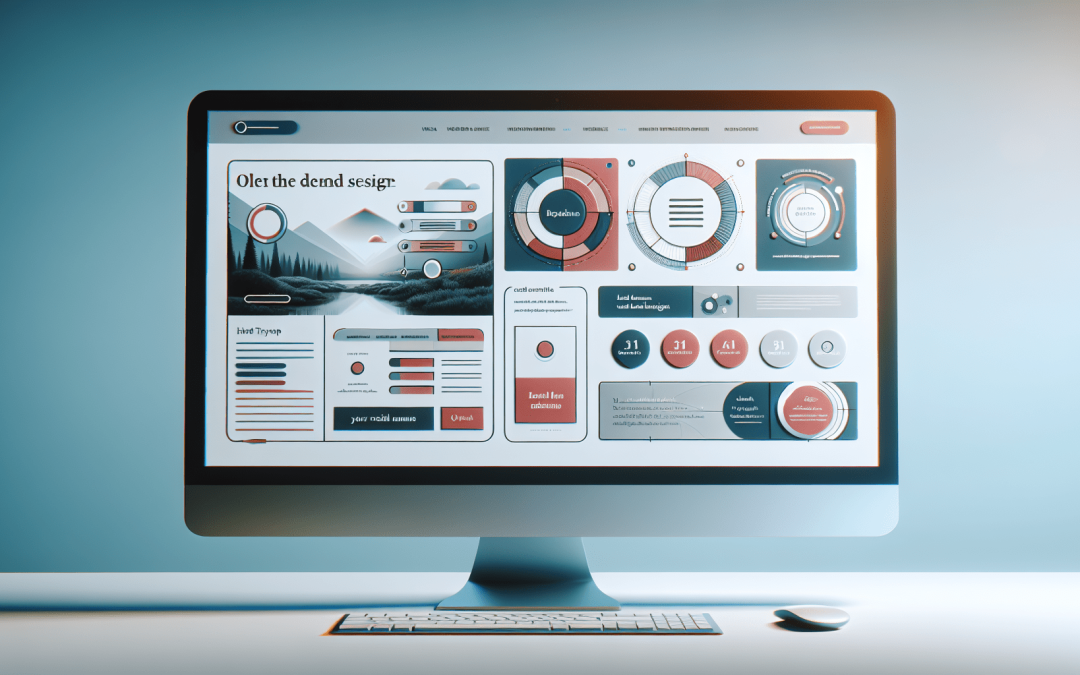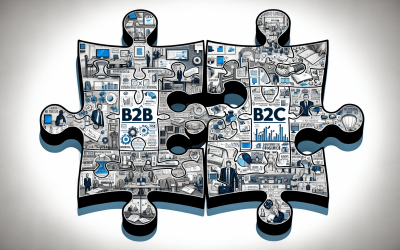Table of Contents
So you’re curious about web design, huh? Well, in a nutshell, web design is the process of creating and styling websites. It involves designing the layout, structuring the content, and selecting the right colors, fonts, and images to create an attractive and functional digital space.
But it’s not just about making things look good – a well-designed website should also be user-friendly, easy to navigate, and optimized for different devices.
In this article, we’ll take a closer look at the world of web design and explore what it entails. Are you ready? Let’s dive in!
Definition of Web Design
Understanding the concept of web design
Web design refers to the process of creating and planning the layout, aesthetic, and functionality of a website. It involves various elements such as layout, color scheme, typography, graphics, and navigation system, all aimed at enhancing the user experience. Web design encompasses both the visual aspects and the underlying structure of a website, ensuring that it is intuitive, user-friendly, and visually appealing.
Importance of web design in the digital age
In today’s digital age, where online presence is crucial for businesses and individuals alike, web design plays a vital role. A well-designed website can leave a lasting impression on visitors and contribute to the success of a business. It serves as a platform to showcase products or services, disseminate information, and engage with the target audience. With increasing competition in the online space, a visually appealing and functional website can differentiate a business from its competitors and attract more visitors, ultimately leading to higher conversions and customer satisfaction.
Evolution of web design
Web design has come a long way since the early days of the internet. In the past, websites were mainly static and lacked interactive elements. However, with advancements in technology and the introduction of new web development techniques, web design has evolved significantly. The emergence of CSS (Cascading Style Sheets) allowed for more flexible and visually appealing designs. As the internet expanded, web design started focusing on responsive design to ensure optimal user experience across various devices. With the rise of mobile devices, web design has also incorporated mobile-first approaches and touch-friendly interfaces. Today, web design continues to evolve in response to emerging technologies and changing user preferences.
Key Elements of Web Design
Layout and structure
The layout and structure of a website refer to how content is organized and presented. A well-designed layout should be visually appealing, easy to navigate, and intuitive for users to find the information they need. The choice of layout depends on the purpose of the website and the target audience. Grid-based layouts are commonly used for their simplicity and consistency, while asymmetrical layouts offer a more unique and creative approach. The structure of the website should be well-planned, with logical hierarchy and clear labeling to guide users through the site.
Color scheme and typography
Color scheme and typography are essential elements of web design that can significantly influence the overall look and feel of a website. The choice of colors should complement the brand identity and evoke the desired emotions in users. A coherent color scheme can enhance the visual appeal and readability of the website. Typography plays a crucial role in conveying information effectively. Selecting appropriate fonts, font sizes, and spacing can improve readability and create a visually pleasing experience for users.
Graphics and images
Graphics and images are powerful tools in web design that can grab users’ attention and convey information more effectively. The use of high-quality images, illustrations, and icons can enhance the visual appeal of a website and make it more engaging. However, it is important to strike a balance between visual aesthetics and page load times. Optimizing images for web use and using appropriate file formats can help maintain a fast-loading website without compromising on visuals.
The navigation system of a website determines how users navigate and access different sections or pages. It should be intuitive, easy to understand, and consistent across the website. Clear and descriptive labels, dropdown menus, and hierarchical structures can assist users in finding the information they need without confusion. Additionally, incorporating search functionality and breadcrumb navigation can further enhance the user experience, especially for larger and complex websites.
Responsive design
With the proliferation of mobile devices, responsive design has become an integral part of web design. Responsive design ensures that a website adapts seamlessly to different screen sizes and devices, providing an optimal user experience regardless of the device being used. By utilizing flexible layouts, proportion-based grids, and media queries, web designers can create websites that automatically adjust and optimize content for smartphones, tablets, and desktops. Responsive design not only improves user experience but also contributes to better search engine rankings, as search engines prioritize mobile-friendly websites.
Web Design Process
Identifying project requirements
The web design process begins by identifying the project requirements. This involves understanding the purpose of the website, the target audience, and the overall goals and objectives. Gathering information about the client’s brand identity, desired features and functionalities, content requirements, and budget constraints is crucial to establishing a clear project scope and direction.
Information architecture and content planning
Once the project requirements are defined, the next step is to determine the information architecture and plan the website’s content. Information architecture involves organizing and structuring the content in a logical and user-friendly manner. This includes defining the site’s main navigation, creating a sitemap, and establishing the hierarchy of pages. Content planning entails identifying the type of content to be included on each page, creating wireframes for layout, and conducting keyword research for search engine optimization (SEO) purposes.
Wireframing and prototyping
After establishing the information architecture and content plan, web designers create wireframes and prototypes to visually represent the website’s layout and functionality. Wireframes are basic visual representations that outline the structure and positioning of various page elements. They serve as a blueprint for the website’s design and provide a clear understanding of how the content will be presented. Prototypes, on the other hand, are interactive versions of the website that allow for testing and validation of design concepts and user interactions.
Visual design and branding
Once wireframes and prototypes are validated, the visual design phase begins. This involves creating the visual elements of the website, including color scheme, typography, graphics, and images. Designers ensure that the visual elements align with the client’s branding guidelines and effectively communicate the desired look and feel. Iterative design reviews and feedback sessions are conducted to refine and finalize the visual design before moving on to the development phase.
Development and implementation
In the development phase, web designers collaborate with web developers to bring the visual design to life. They translate the design into a working website using various web technologies such as HTML, CSS, and JavaScript. This phase involves coding the website’s structure, implementing responsive design principles, integrating content management systems (CMS), and incorporating any interactive or dynamic functionalities. Testing and quality assurance are conducted to ensure that the website functions correctly and performs optimally across different devices and web browsers.
Role of Web Design in User Experience
Creating an intuitive and user-friendly interface
Web design plays a crucial role in creating an intuitive and user-friendly interface. A well-designed interface ensures that users can navigate the website easily, find the information they need, and perform desired actions seamlessly. User-centric design principles, such as clear and consistent navigation, intuitive iconography, and well-placed call-to-action buttons, help users accomplish their goals quickly and efficiently.
Enhancing accessibility and usability
Web design also contributes to enhancing accessibility and usability for all users, including those with disabilities. Designing with accessibility in mind involves ensuring that the website is perceivable, operable, understandable, and robust for users with different abilities. This includes providing alternatives for non-text content (such as alt tags for images), creating proper heading structures, using sufficient color contrast, and implementing keyboard navigation options. Usability testing and user feedback are valuable tools to assess and improve the accessibility and usability of a website.
Optimizing site performance
Web design plays a significant role in optimizing site performance, which directly impacts user experience. A well-optimized website not only improves loading speeds but also reduces bounce rates and increases user engagement. Web designers employ various techniques, such as optimizing image sizes, minimizing HTTP requests, and leveraging caching mechanisms, to create faster and more responsive websites. The use of clean and efficient code, combined with proper hosting infrastructure, can further enhance site performance.
Providing a consistent and cohesive experience across devices
In an era where users access websites from various devices, web design ensures a consistent and cohesive experience across different screen sizes and resolutions. Responsive design principles allow websites to adapt seamlessly to different devices, providing users with a consistent experience and minimizing the need for separate mobile websites or native applications. Consistency in design elements, typography, and navigation across devices helps users feel familiar and confident when using a website on different platforms.
Trends in Web Design
Minimalistic design
In recent years, minimalistic design has gained popularity in web design. This approach focuses on simplicity, using clean lines, ample white space, and limited color palettes. Minimalistic design eliminates clutter and distractions, allowing the content to take center stage. It creates a visually appealing and modern look, while also providing a seamless user experience by reducing cognitive load and improving readability.
Mobile-first approach
With the increasing dominance of mobile devices, web design has shifted toward a mobile-first approach. This means designing websites with mobile users in mind first, and then adapting the design to larger screens. Mobile-first design emphasizes responsive layouts, touch-friendly interactions, and simplified navigation, ensuring that websites provide a seamless experience on smartphones and tablets. This approach also aligns with search engine optimization best practices, as search engines prioritize mobile-friendly websites in their rankings.
Microinteractions
Microinteractions refer to subtle and specific animations or responses that occur in response to a user’s actions. They add a touch of interactivity and personality to a website, enhancing the overall user experience. Examples of microinteractions include small animations when hovering over buttons, progress bars indicating loading times, and confirmation messages when completing a form. Microinteractions can provide visual feedback, guide users through the website, and create a more engaging and enjoyable browsing experience.
Scrolling and parallax effects
Long-scrolling websites and parallax effects have become popular trends in web design. Instead of traditional page-by-page navigation, long-scrolling websites allow users to scroll vertically through a continuous flow of content. Parallax effects create an illusion of depth by moving different elements at different speeds as the user scrolls. These design techniques can create captivating and immersive experiences, as well as encourage users to engage with the content and explore more.
AI-powered chatbots
Artificial intelligence (AI)-powered chatbots are increasingly being integrated into web design to provide instant customer service and support. Chatbots use natural language processing to understand user inquiries and provide relevant responses. They can answer frequently asked questions, guide users through the website, and even complete simple tasks. AI-powered chatbots not only provide convenience and efficiency but also contribute to a more personalized and interactive user experience.
Tools and Technologies for Web Design
HTML and CSS
HTML (Hypertext Markup Language) and CSS (Cascading Style Sheets) are the foundational technologies for web design. HTML is used to structure the content on web pages, while CSS is used to style and format the content. Web designers need a solid understanding of HTML and CSS to create well-structured and visually appealing websites. They also need to stay updated with the latest HTML and CSS specifications and best practices.
UI/UX design software
UI/UX design software, such as Adobe XD, Sketch, and Figma, are widely used in web design to create wireframes, prototypes, and visual designs. These tools provide a range of features and functionalities specifically tailored for designing user interfaces and user experiences. They allow designers to easily collaborate, iterate designs, and test interactions before moving into the development phase.
Content management systems
Content management systems (CMS), such as WordPress, Drupal, and Joomla, are commonly used in web design to build and manage websites. CMS provide ready-to-use templates, plugins, and themes that simplify the design and development process. They allow designers and content creators to update, publish, and organize content without the need for extensive coding knowledge. CMS also enable dynamic content, user management, and search engine optimization.
Responsive frameworks
Responsive frameworks, such as Bootstrap and Foundation, provide a collection of pre-designed and responsive components that accelerate the web design process. These frameworks ensure that websites are mobile-friendly and adapt seamlessly to different devices. They include responsive grids, navigation bars, form elements, and typography styles that can be customized and integrated into the website’s design. Utilizing responsive frameworks saves time and effort in building and testing responsive layouts from scratch.
Version control systems
Version control systems, such as Git, are essential tools for web designers collaborating with developers during the development phase. Version control systems allow designers to track changes, manage different versions of files, and merge code changes seamlessly. They provide a centralized repository for the design files and allow for easy collaboration and code integration between designers and developers. Version control systems also ensure project backups and help maintain a clean and organized project history.
Web Design vs. Web Development
Differences and overlaps between web design and web development
Web design and web development are closely related disciplines but involve different skill sets and responsibilities. Web design focuses on the visual and user experience aspects of a website, while web development focuses on the technical implementation and functionality.
Web designers are responsible for creating the layout, visual elements, and aesthetics of a website. They work on the design process, including wireframing, visual design, and creating the overall user experience. Web designers have expertise in graphic design, color theory, typography, and user interface (UI) design. They need to consider usability, accessibility, and branding while designing a website.
On the other hand, web developers bring the web design to life by implementing the design using programming languages and web technologies. They handle the technical aspects, such as coding the website’s structure, integrating functionalities, and optimizing performance. Web developers have expertise in programming languages like HTML, CSS, JavaScript, and backend languages like PHP or Python. They ensure that the website functions correctly and meets the specified requirements.
While there are differences, there is also significant overlap between web design and web development. Collaboration and communication between designers and developers are essential to ensure that the final product aligns with the design vision while incorporating technical feasibility and best practices.
Collaboration between designers and developers
Collaboration between web designers and web developers is crucial to creating successful websites. Designers and developers should work together from the early stages of a project to ensure the design can be effectively implemented and optimized.
Designers and developers should communicate regularly to discuss project requirements, technical limitations, and design considerations. This collaboration enables designers to understand the technical capabilities and constraints, while developers can provide insights and suggestions to enhance the design and user experience.
Throughout the design and development process, designers and developers should conduct regular feedback sessions, reviews, and testing to iterate and refine the design. This feedback loop allows for continuous improvement and ensures that the final product meets both design and technical requirements.
The importance of a holistic approach
Web design and web development should be approached holistically, considering both the visual and technical aspects. A holistic approach involves considering the entire user journey, including discovering the website, browsing the content, and accomplishing desired actions.
Designers should collaborate with developers to ensure that the design aligns with technical best practices such as responsive design, performance optimization, and accessibility. Similarly, developers should involve designers in the development process to ensure that the final implementation meets the design vision and maintains a cohesive user experience.
A holistic approach to web design and development results in websites that are visually appealing, functionally sound, and meet the users’ needs and expectations.
Web Design Best Practices
Creating responsive designs
Creating responsive designs that adapt to different devices and screen sizes is essential for effective web design. Responsive design ensures that users have a consistent and optimized experience on smartphones, tablets, and desktops. Designers should prioritize responsive layouts, scalable images, and flexible typography. Regular testing on different devices and browsers is necessary to identify and address any responsiveness issues.
Implementing SEO-friendly practices
Web design should incorporate search engine optimization (SEO) best practices to improve a website’s visibility and ranking in search engine results. Designers should consider aspects such as proper heading structure, user-friendly URLs, and optimized image alt tags. Optimizing page load times, implementing structured data, and utilizing relevant keywords in meta tags are also crucial. Collaboration with SEO experts or the use of SEO plugins or tools can help designers incorporate SEO-friendly practices effectively.
Optimizing site performance
Site performance optimization is vital for a positive user experience. Designers should optimize images, minify CSS and JavaScript files, and leverage caching mechanisms to reduce load times. Compressing and combining files, optimizing server configurations, and choosing a reliable hosting provider are also important considerations. Regular performance testing and optimization are necessary to ensure a fast and efficient website.
Designing for accessibility
Accessible web design ensures that websites can be used by individuals with disabilities. Designers should follow accessibility guidelines and standards, such as the Web Content Accessibility Guidelines (WCAG), to make websites perceivable, operable, understandable, and robust for all users. This may involve using sufficient color contrast, providing alternative text for images, designing keyboard-friendly navigation, and incorporating assistive technology compatibility. Regular accessibility testing and user feedback should be conducted to identify and address accessibility barriers.
Consistency in branding and visual elements
Consistency in branding and visual elements is crucial for establishing a strong brand identity and creating a cohesive user experience. Designers should adhere to brand guidelines, including logo usage, color palettes, and typography choices. Consistent use of fonts, spacing, and visual hierarchy throughout the website ensures a harmonious and professional look. Regular design reviews and style guides can help maintain consistency and provide a reference for future design updates.
Challenges in Web Design
Cross-browser compatibility
One of the challenges in web design is ensuring cross-browser compatibility. Websites may appear and function differently across different web browsers due to variations in rendering engines and support for web technologies. Designers should test and validate their designs on popular browsers such as Google Chrome, Mozilla Firefox, Safari, and Microsoft Edge. Using browser compatibility tools or frameworks can help identify and address any compatibility issues.
Keeping up with technological advancements
The rapidly evolving nature of web technologies presents a challenge for web designers. Staying updated with the latest web design trends, tools, and techniques is essential to deliver modern and innovative designs. Designers need to invest time in continuous learning, experimentation, and staying informed about emerging technologies. Regularly attending workshops, conferences, and online courses can help designers stay ahead of the curve.
Balancing creativity and usability
Finding the right balance between creativity and usability is another challenge in web design. While designers aim to create visually appealing and innovative designs, they should also ensure that the designs are user-friendly, intuitive, and accessible. Design choices should align with the target audience’s expectations and preferences while considering usability best practices. Regular user testing and feedback can help strike the right balance and refine the design based on user insights.
Future of Web Design
Influence of emerging technologies like VR and AR
The future of web design is expected to be influenced by emerging technologies such as virtual reality (VR) and augmented reality (AR). VR and AR can create immersive and interactive web experiences, allowing users to explore products, services, or environments in a more engaging way. Web designers will need to consider the design implications of incorporating VR and AR elements, such as 3D models, interactive environments, and gesture-based interactions.
Dynamic and interactive web experiences
Web design will continue to focus on creating dynamic and interactive web experiences. With advancements in web technologies like HTML5, CSS3, and JavaScript, designers can create animations, transitions, and interactions that engage users and provide a more enjoyable browsing experience. From interactive sliders and carousels to scroll-triggered animations, web design will increasingly emphasize interactivity to captivate users and convey information effectively.
Personalized user interfaces
Personalization is becoming increasingly important in web design. By leveraging user data, designers can create personalized user interfaces that adapt to users’ preferences, behaviors, and browsing history. Personalized interfaces can enhance user engagement, improve conversion rates, and provide a tailored experience for each user. Designers need to consider how to incorporate personalization without compromising user privacy and maintaining transparency in data collection and usage.
Continued emphasis on mobile optimization
With the continued rise of mobile device usage, web design will maintain a strong emphasis on mobile optimization. Mobile-first design principles, responsive layouts, and touch-friendly interactions will remain essential considerations. As mobile technologies, such as 5G, advance, web designers will need to optimize websites for faster load times, improved performance, and seamless mobile experiences. Voice search optimization and mobile app integration may also become more prevalent in web design to cater to mobile users’ evolving needs.
In conclusion, web design plays a vital role in shaping the online experiences of users. It encompasses various elements, processes, and best practices to create visually appealing, user-friendly, and functional websites. Web designers need to stay updated with the latest trends and technologies to create innovative and future-proof designs. By understanding the importance of web design, incorporating best practices, and adapting to emerging technologies, designers can create websites that engage users, deliver optimal user experiences, and contribute to the success of businesses in the digital age.











